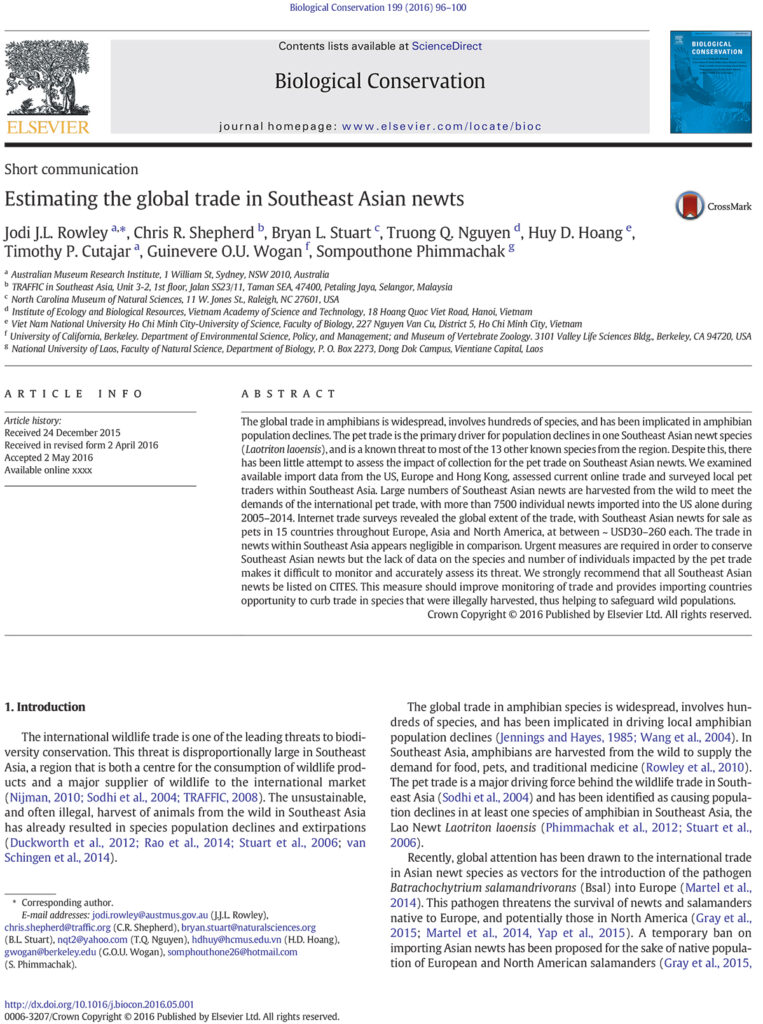The global trade inamphibians iswidespread, involves hundreds of species, andhas been implicated in amphibian population declines. Thepet trade is the primary driver for populationdeclines inone Southeast Asian newt species (Laotriton laoensis), and is aknown threat to most of the 13 other known species from the region. Despite this, there has been little attempt to assess the impact of collection for the pet trade on Southeast Asian newts. We examined available import data from the US, Europe and Hong Kong, assessed current online trade and surveyed local pet traders within Southeast Asia. Large numbers of Southeast Asian newts are harvested from the wild to meet the demands of the international pet trade, with more than 7500 individual newts imported into the US alone during 2005–2014. Internet trade surveys revealed the global extent of the trade, with Southeast Asian newts for sale as pets in 15 countries throughout Europe, Asia and North America, at between ~ USD 30–260 each. The trade in newts within Southeast Asia appears negligible in comparison. Urgent measures are required in order to conserve Southeast Asian newts but the lack of data on the species and number of individuals impacted by the pet trade makes it difficult to monitor and accurately assess its threat. We strongly recommend that all Southeast Asian newts be listed on CITES. This measure should improve monitoring of trade and provides importing countries opportunity to curb trade in species that were illegally harvested, thus helping to safeguard wild populations.
Types:
published in 2016, language




